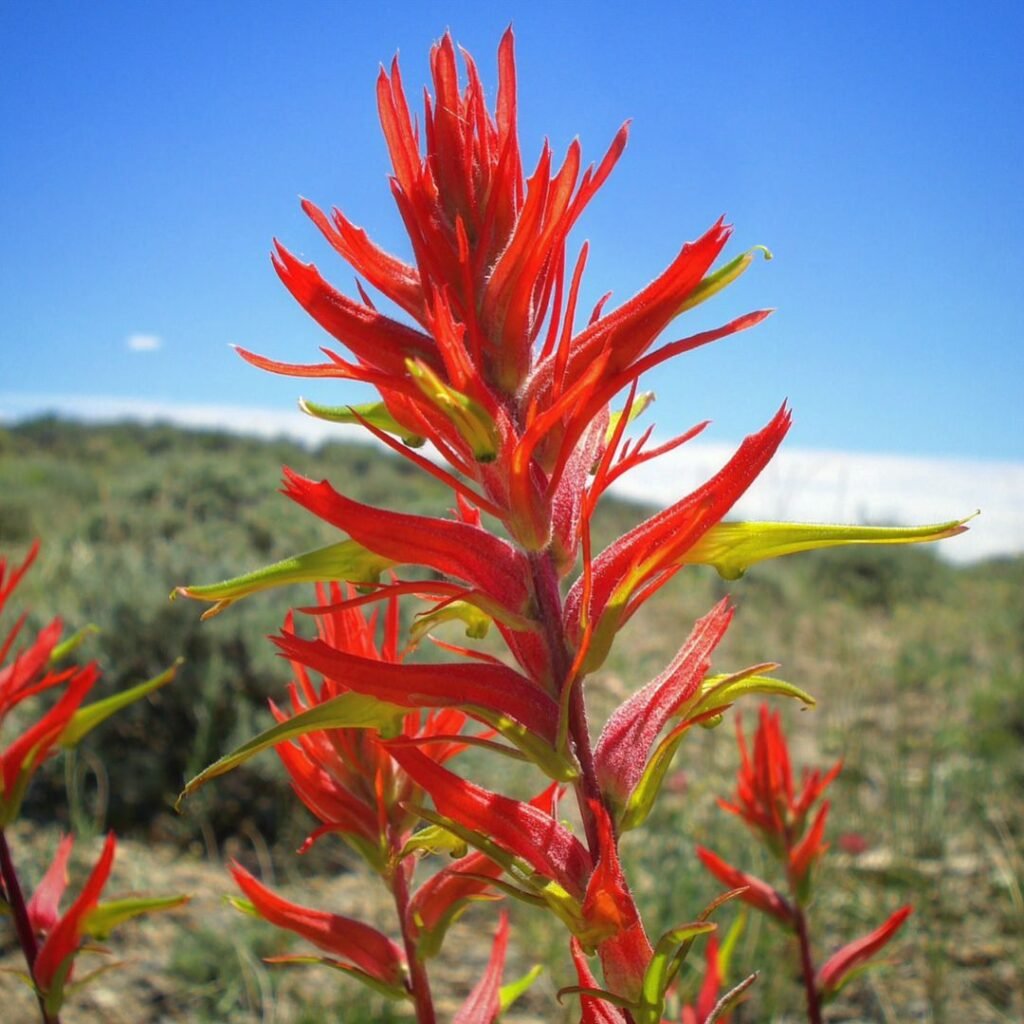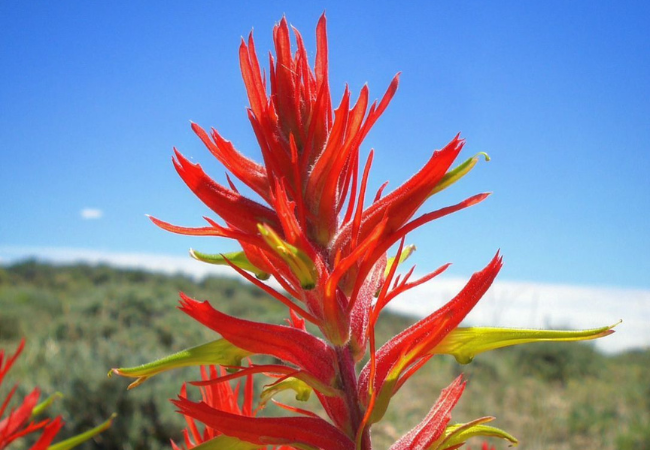Discover the beauty and significance of the Indian Paintbrush flower. Learn about its unique features, growing habits and cultural importance in this informative guide.
Have you ever seen a field of flowers that look like they’ve been dipped in bright red or orange paint? Chances are, you’ve stumbled upon a patch of Indian Paintbrush flowers. These eye-catching wildflowers are a common sight across North America and have a fascinating story to tell.
Here’s an easy and verified chart for Indian Paintbrush (Castilleja spp.):
| Category | Details |
|---|---|
| Botanical Name | Castilleja spp. |
| Common Name | Indian Paintbrush |
| Plant Type | Herbaceous perennial |
| Hardiness Zone | Zones 3-9 (depending on species) |
| Sun Exposure | Full sun to part shade |
| Soil Type | Well-draining, sandy or gravelly soil |
| Watering Needs | Low to moderate; drought tolerant once established |
| Growth Habit | Upright, clump-forming |
| Height/Spread | 6 inches to 2 feet tall, spread of 6-12 inches |
| Special Features | Spikes of tubular flowers in shades of red, orange, yellow or pink; blooms in spring to summer; attracts hummingbirds; often semi-parasitic, deriving some nutrients from nearby plants; important in native plant communities and wildflower gardens |
What is Indian Paintbrush?

Indian Paintbrush, also known by its scientific name Castilleja, is a wildflower native to North and Central America. It gets its name from the brightly colored leaf-like bracts that surround its small flowers, which resemble a paintbrush dipped in paint.
Key Features:
- Bright colors: Usually red, but can also be orange, pink, or yellow
- Unique structure: Small flowers surrounded by colorful bracts
- Height: Typically 1-2 feet tall
- Blooming season: Spring to early summer
Where Does Indian Paintbrush Grow?
These hardy plants can be found in various habitats across North America:
- Prairies and meadows
- Mountain slopes
- Forest clearings
- Desert areas (some species)
Indian Paintbrush is adaptable and can grow in different soil types, from sandy to clay. It’s particularly common in western states like Wyoming, where it’s the state flower.
Growing Indian Paintbrush
Growing Indian Paintbrush can be tricky because it’s a hemiparasite. This means it partly relies on other plants for nutrients. Here’s what you need to know:
- Seed planting: Sow seeds in fall for spring germination
- Soil: Well-draining soil is best
- Sun: Prefers full sun to partial shade
- Water: Moderate watering; doesn’t like soggy soil
- Companion plants: Plant near grasses or other native plants for best results
Growing tips from the Lady Bird Johnson Wildflower Center
Ecological Importance
Indian Paintbrush plays a vital role in its ecosystem:
- Pollinator attraction: The bright colors attract hummingbirds and butterflies
- Native plant communities: Supports other native plants and wildlife
- Soil health: Helps maintain soil structure and fertility
Learn more about wildflower ecology from the U.S. Forest Service
Cultural Significance
Indian Paintbrush has been important to many Native American tribes:
- Medicinal uses: Some tribes used it to treat burns and skin irritations
- Folklore: Featured in various legends and stories
- Food: Young plants were sometimes eaten as greens
Conservation Status
While not endangered overall, some species of Indian Paintbrush are threatened due to habitat loss. Conservation efforts include:
- Protecting native habitats
- Limiting picking of wild plants
- Encouraging native plant gardening
Information on plant conservation from the U.S. Fish and Wildlife Service
Interesting Facts About Indian Paintbrush
- State flower: It’s the state flower of Wyoming
- Name origin: The name comes from a Native American legend
- Diversity: There are over 200 species of Castilleja
- Adaptation: Some species can survive in harsh alpine environments
Tips for Enjoying Indian Paintbrush
If you want to see these beautiful flowers in the wild:
- Visit national parks or nature preserves in spring or early summer
- Take photos instead of picking the flowers
- Stay on designated trails to protect habitats
- Learn to identify different species
Find a national park near you with the National Park Service
Indian Paintbrush in Your Garden
While challenging to grow, you can support Indian Paintbrush by:
- Planting native wildflowers that complement it
- Creating wildflower meadows in your yard
- Avoiding pesticides that might harm pollinators
- Educating others about the importance of native plants
Get gardening tips from the National Gardening Association
Indian Paintbrush flowers are more than just pretty faces in the landscape. They’re an important part of North American ecosystems and cultural heritage. Whether you’re admiring them in the wild or trying to grow them at home, these vibrant flowers are sure to paint your world with color and wonder.
Learn more about native plant conservation from the U.S. Botanic Garden
For more gardening tips and plant care guides, visit usagardenhub.com.







One comment on “Indian Paintbrush : The Vibrant Wildflower of North America”